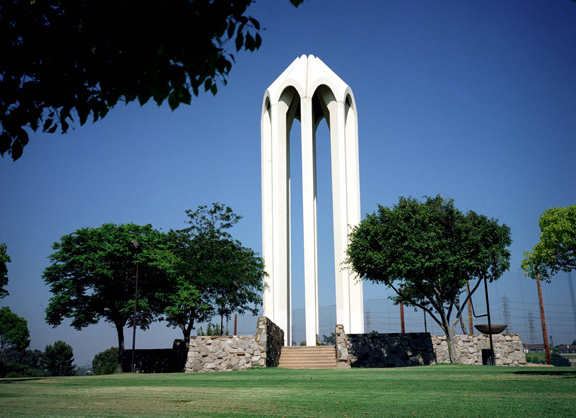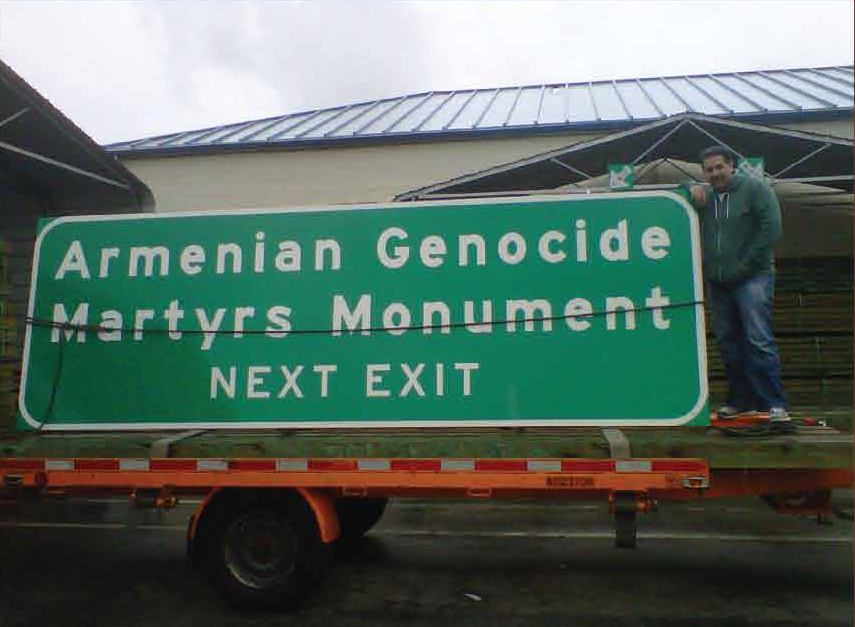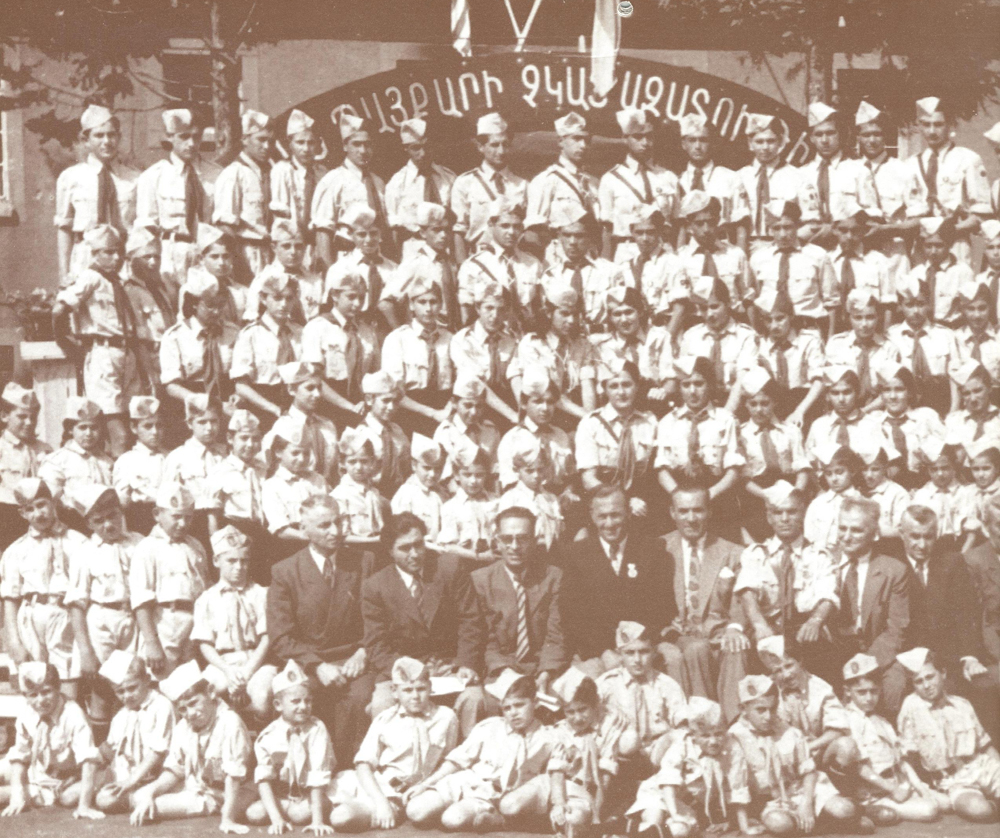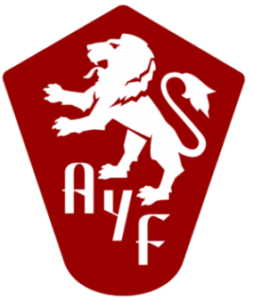Displaced Person Strengthening Communities; The Story of the Montebello DPs
In the 1940’s, Adolf Hitler and his Nazi army battled Russia for control of Eastern Europe in World War II. Consequently, tens of thousands of people who called these warn torn pieces of land home were reluctantly uprooted and shipped off to labor camps in Germany. Among the thousands of displaced persons, or DPs, were Armenians.
Albert Petrossian, one of the DPs who established Montebello’s Armenian Community, recalls life in these camps. “We lived in labor camps, maybe 800 Armenians in some, 400 people in others. It was a mixture of Russians, Armenians, Ukrainians.”
For the Armenians – along with the estimated 11 to 20 million displaced persons in Europe at the time – the future was uncertain. Many of them, like Petrossian, couldn’t return home because their home was constantly switching borders between the Nazis and the Soviets – life under either regime’s rule was far from enticing.
When the Americans liberated Germany in 1945, the Axis powers made available a large army barrack called Funker Kaseme Camp for the Armenians to live in. “It was beautiful, just beautiful,” explains Petrossian. “All the Armenians found out about this camp near Stuttgart and started flocking there. We eventually had over 2,000 Armenians.”
By 1946, the camp had well over 2,000 Armenians, and was known by many in the region as Little Armenia. Supported by the U.S. Army, the Armenians created a world that somehow seemed indifferent to the hardships and atrocities of war they had all born witness to. They wasted no time improvising the concept of home as the DP’s built a tight knit community from scratch.
“We had a school, church, theater, stores, restaurants, bakeries,” remembers Petrossian. “It was a very happy life for us, especially for the kids.”
Eventually, the DPs of Europe needed to be placed somewhere. Luckily for the Armenians at Stuttgart, General George Mardikian, an Armenian American in charge of the American food supply at the camps, personally saw to it that the Armenian DPs made it to United States.
Displaced again – but experienced in the art of survival. The DPs settled in the East Los Angeles city of Montebello ready to sew the roots of a prosperous and bustling Armenian American Community.
The Montebello Armenians fashioned their community much like the one at the camp, and paved the way for future Armenian communities in the Southern California Area.
The Holy Cross Church, Bagramian Hall, and Tumanjian Hall near the corner of Lincoln and Montebello Blvd were among the first staples of the Montebello Armenian community. The first Armenian school in Los Angeles, Armenian Mesrobian School, opened its doors in Montebello in 1965.
 In 1968, the Montebello Armenian community also built the Armenian Genocide Martyrs Monument. It is the first and only monument commemorating the memory of the victims of the Armenian genocide on public land in the world. “We wanted to keep our history, teach the history of Armenia, and keep everyone together.”
In 1968, the Montebello Armenian community also built the Armenian Genocide Martyrs Monument. It is the first and only monument commemorating the memory of the victims of the Armenian genocide on public land in the world. “We wanted to keep our history, teach the history of Armenia, and keep everyone together.”
After much hard work the San Gabriel Valley ANCA recently succeeded in approving the installment of a massive freeway sign on Route 60 Freeway noting the “Armenian Genocide Martyrs Monument” near Montebello. This will be the first time the word “Armenian Genocide” will permanently be inscribed on US soil.
With the ideals of community and cultural awareness embedded in the consciousness of many Montebello youth, the Vahan Cardashian-AYF chapter is building on the very foundations set almost 70 years ago- a foundation rooted in community, in our own “Little Armenia”. Ani Petrossian, a grandchild of Montebello DP’s describes the current state of the chapter and community as whole. “Our agoumps [Armenian Centers] have become nothing less than a second home and our members have become extended members of a larger family”.
A place where formalities are non-existent and friendships ever present; Montebello has become a perfect Saroyan cliché. Where members of a displaced community have planted roots for their own Armenia outside the motherland. The local AYF chapter holds cooking classes where mothers teach the younger generation of traditional favorites and the younger badanees hold dinners for families to come together, connect with friends, and make new ones.
 Many of the AYF membership come from Displaced Families. Just like their parents and grandparents before them, they have continued to take responsible in the community and their Armenian identities. Nick Cabraloff states, “we feel like it is an obligation for us to take an active role in the community, in one that has done so much for us.”
Many of the AYF membership come from Displaced Families. Just like their parents and grandparents before them, they have continued to take responsible in the community and their Armenian identities. Nick Cabraloff states, “we feel like it is an obligation for us to take an active role in the community, in one that has done so much for us.”
From the United States to France, Syria to Lebanon, and any other country which boasts an Armenian Population; Dislocated Armenians, such as ones from the Montebello community have come together to prove that Armenia is not just a location on a map, but rather a state of mind.



Leave a Reply
Want to join the discussion?Feel free to contribute!